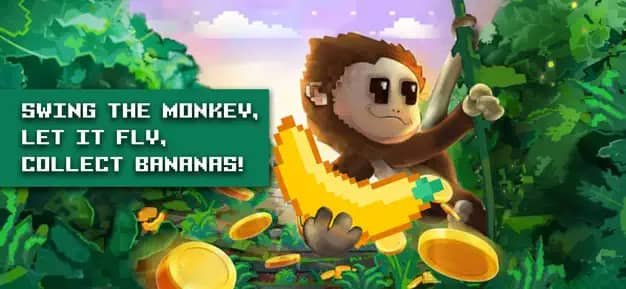Once banned for daring to reward players with Bitcoin, SaruTobi has made a triumphant return 🐒✨ On 9th July 2025, Apple officially approved its comeback, restoring the iconic Bitcoin. game to the App Store after years in exile.
Created in 2013 by Christian Moss, SaruTobi pioneered play-to-earn mechanics, integrated early NFTs, and merged blockchain with mobile gaming long before Web3 emerged. Its revival marks a defining moment for both crypto and iOS alike.
Players can swing Tobi through the jungle, collect bananas 🍌, and earn sats as they play. Fully integrated with the Lightning Network, SaruTobi lets players use $BTC rewards for in-game boosts or withdraw them instantly to a Lightning wallet.
It’s the first iOS game to embed Bitcoin earning directly into gameplay.
About SaruTobi
SaruTobi began as a simple arcade adventure where players launched Tobi the monkey across pixelated jungles, collecting bananas 🍌 and coins to stay airborne. What set it apart wasn’t just its charm but the way it turned gameplay into an early experiment in blockchain integration.
In December 2015, the SARUTOBICARD was released as part of Spells of Genesis on Counterparty, enabling cross-game utility. Five months later, Christian Moss created NINJASUIT, a tokenized skin that became one of the first in-game blockchain assets. Later that year, SARUTOBIPEPE made history as the first Rare Pepe card usable within a game. More info in Redlion.news.
These Counterparty NFTs aren’t just historical artifacts—they remain fully tradable. Players can exchange them via Counterparty DEXs or as wrapped assets on Ethereum through Emblem Vault. For example, SARUTOBIPEPE is listed in the Emblem Vault Legacy collection on OpenSea.
MandelDuck LTD later expanded its blockchain experimentation with SaruTobi Island, an AR experience blending monster breeding and NFTs, and Game of Birds, a puzzle game where players earned Bitcoin tips via Coinbase payouts.

